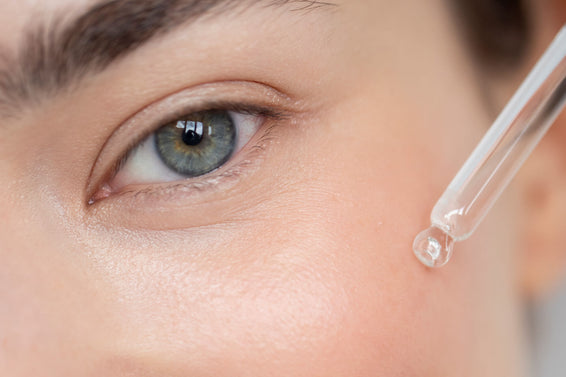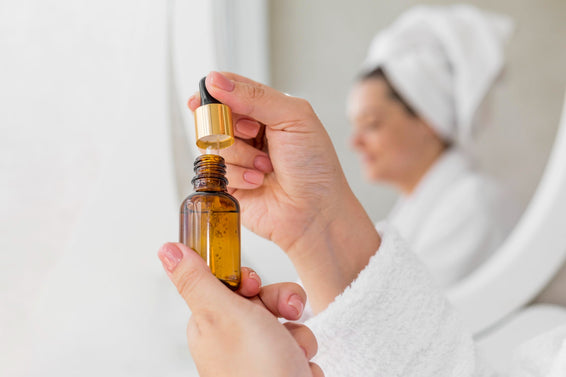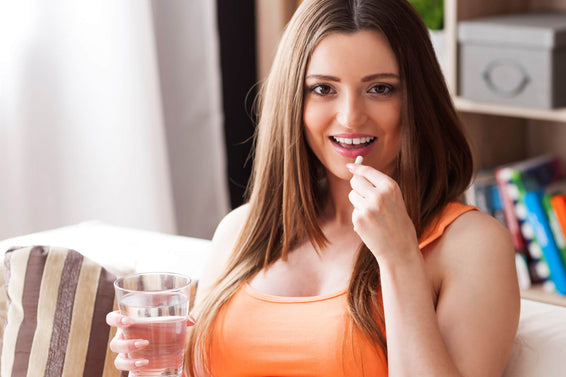The Korean 10-step skin care method has taken over the West. Many have tried this method and have attested to its effects of healthier and suppler skin. But did you know there’s a 10-step method for your hair too?
The secret to healthy hair lies in your scalp. That’s the main focus of the Korean hair care routine. This method consists of removing dead skin cells and layering hydrating products. Read on more on how to get luscious tresses like your favorite K-Pop idol.

What the Korean Scalp Care Routine Does for Your Hair
Want to take your hair care game up a notch? Try the method Koreans use for their hair.
The Korean hair care method uses an approach that’s similar to treating your complexion. This approach focuses mainly on keeping pH levels balanced when cleansing your skin and hair. To do this you’ll need products formulated for your scalp such as exfoliators, serums, and masks.
What is pH and Why is it Important?
pH, or potential hydrogen, is a measure used to find out if liquids are acidic or basic. This measure ranges from 1-14 with 1 being highly acidic while 14 indicating the product as alkaline or basic. Liquids with a pH level of 7 are known as neutral.
Both human skin and scalp are fairly acidic. They fall within the 4.5-5.5 range. Your skin has an acid barrier that helps prevent bacterial and fungal growth.
It is essential to maintain your scalp’s natural pH level by using the right products. A compound that’s too alkaline, or too acidic, opens or closes your cuticles respectively. Your hair fibers are prone to damage if your pH levels are unbalanced.
The Benefits and Importance of Scalp Care
Your scalp and skin are composed of the same proteins and fats. They both have oil glands that produce an oily substance called sebum. Sebum spreads through your strands and keeps them shiny and moisturized. When your scalp is unhealthy, you experience dry or greasy hair. You may experience hair issues such as hair loss or dandruff.
Taking care of your scalp the same way you would care for your skin keeps hair healthy. Doing this also promotes hair growth and strength. Regularly cleansing your scalp prevents clogged follicles and buildup. Applying products that protect your scalp helps prevent hair damage from external stressors, such as UV rays and chemicals.
Scalp Types and Conditions You Need to Know
Your sebaceous glands help determine what type of scalp you have. These glands produce an oily substance, called sebum. Knowing which type of scalp you have helps you choose the right products with the best ingredients.
- Dry Scalp
Dry scalp usually means you have small oil glands. The sebum from these oil glands isn’t able to coat your tresses with the moisture it needs. Your hair is prone to breakage and dryness for the lack of moisture. Chances are your scalp has a high pH level or too alkaline.
Look for products with ingredients that have pH levels that range from 6-7. Use a product that contains acidic ingredients, such as apple cider vinegar and citrus extracts.
- Oily Scalp
If you have oily skin, chances are you naturally have greasy hair. Your scalp has large pores that produce too much sebum, which leads to limp hair. Excess oils mean your scalp’s pH is level is low or acidic. Some factors, such as hormonal changes and diet, are the causes of an oily scalp.
Choose products with a regular pH level of 7. These hair products help rebalance your scalp and hair’s pH level. Water-based plant extracts are ideal ingredients to look for to counteract the oiliness.
- Normal Scalp
Your hair is easy to manage if you have a normal scalp. Your natural oils are balanced, which means you have soft and shiny locks. Keeping your hair’s state is important even if you don’t have any issues. Choose gentle products to maintain the pH level of your scalp.
- Combination Scalp
You most likely have a mix of an oily scalp, frizzy strands, and dry ends if you have combination hair. Sebum from your oil glands doesn’t spread through your strands effectively. Your scalp traps the oil and creates a greasy appearance while you have dull strands.
People with curly, frizzy, or long hair usually have combination hair. For curly hair, choose products that are slightly acidic since your cuticles are already a bit open.
The 10-Step Korean Scalp Care Routine
You have heard of the glass skin trend, but have you heard of glass hair? The focus of the Korean scalp care routine is all about cleansing, hydrating and rebalancing pH levels. Here are the steps to follow to get shiny and manageable hair.

Step 1: Do a Scalp Treatment
A healthy scalp promotes the growth of soft, smooth, and shiny hair. When dirt, oil, pollutants, and dead skin cells form on your scalp, they make hair look dull and lifeless. Cleansing with a scalp treatment removes these impurities and residue. This step prevents clogged follicles and other scalp issues. Look for a product with a gentle formula.
Apply a scalp treatment once a week before shampooing your tresses. Do not apply treatment every day to avoid irritating your scalp.
Step 2: Lather on Shampoo
After cleansing with a scalp treatment, follow up with shampoo. Choose a shampoo that contains natural ingredients. Avoid harsh chemical-based ingredients that strip off your natural oils.
You want a product that hydrates your hair while keeping your scalp clean. Shiny Leaf Castor Oil Shampoo is an excellent product that works for different scalp types. It’s packed with healthy fatty acids that keep hair and scalp clean as it hydrates. This shampoo removes dirt and excess oils without stripping your hair off its natural oils. Lather on a quarter-sized amount of shampoo. Massage gently and leave on for a few minutes before rinsing.

Step 3: Massage Your Scalp
Massaging your scalp offers benefits for your hair. It helps stimulate follicles, which improves blood circulation on your scalp. Doing this encourages hair growth and thickness. You can use a scalp brush or your fingers.
Massage your scalp in gentle, circular motions with your fingers or brush massager. Do this for 5 to 10 minutes while shampooing your hair.
Step 4: Apply Conditioner
Conditioning your hair is an important step after cleansing your tresses. Applying conditioner helps restore moisture to your strands. Look for a conditioning product that has natural ingredients, such as plant extracts.
Take a dollop-sized amount of conditioner and apply two-thirds up from the ends of your hair. Use more if your hair feels dry and damaged. Let conditioner sit for a few minutes and then rinse thoroughly.

Step 5: Do Weekly Hair Mask Treatment
Deep conditioning masks nourish and add strength to your tresses. They contain active ingredients that help strengthen and repair damaged hair.
Use a hydrating hair mask if you have coarse and dry strands. For fine and oily hair, look for masks that have strengthening and lightweight ingredients.
Apply a hair mask once or twice a week on damp hair as a substitute for conditioner. Leave the mask on for 15 or 30 minutes before rinsing.
Step 6: Rinse Your Hair with Vinegar
Apple cider vinegar has a lot of beneficial nutrients. It has antimicrobial properties that provide relief for inflamed areas in your scalp. It also helps restore your scalp’s pH levels, resulting in less frizzy and dull hair. Apple cider vinegar is ideal for different hair types as it counteracts dryness and prevents excess oil production.
Mix one part apple cider vinegar and water. Rinse your scalp with the mixture after shampooing and conditioning your tresses. Massage the solution on your scalp for two minutes. Use cold water to rinse out the vinegar afterward. Do this process once or twice a week.

Step 7: Apply Scalp Serum
Scalp serums contain a high concentration of ingredients that care for your scalp. This hair care product repairs and moisturizes your scalp by penetrating through your follicles. They prevent dryness and excess oiliness on your scalp.
Use a light and oil-free serum if you have a greasy scalp. Use a serum with a dense consistency and hydrating properties if you have dry scalp. Apply a quarter-sized amount of serum on your scalp after you shower. Gently massage the product into your scalp to let the nutrients absorb.
Step 8: Apply Hair Serum
Hair serums tame flyaways and add shine to your tresses. Some hair serums protect your hair from heat while you use styling tools. Water-based serums are ideal for oily hair. Serums packed with oils work for coarse and dry hair.
After applying a scalp serum, place a few drops of serum on the palm of your hands. Apply serum on your hair. No need to rinse serum.

Step 9: Apply Hair Mist or Hair Oil
You want to prevent your hair from losing shine and moisture. Hair mists and oils create a protective layer on your hair to seal in water. Spray on some water-based hair mist if you have oily hair. Apply a few drops of hair oil if you have dry strands.
Step 10: Do an Overnight Treatment
Overnight treatments help strengthen and hydrate your strands overnight while you sleep. They target frizzy and damaged hair. These treatments nourish your hair while you sleep, leaving you with smooth, soft, and shiny tresses.
Apply an overnight treatment on your hair before going to bed. Wear a shower cap or wrap your head in cling film to prevent any messy stains on your pillows and sheets.
The key to a great hair care routine is balancing out oils and restoring moisture to your scalp. Doing this Korean 10-step scalp care routine seems intimidating at first but it will benefit your hair in the long run. Make sure to choose the right products suitable for your scalp and hair type to avoid hair issues from occurring.

















